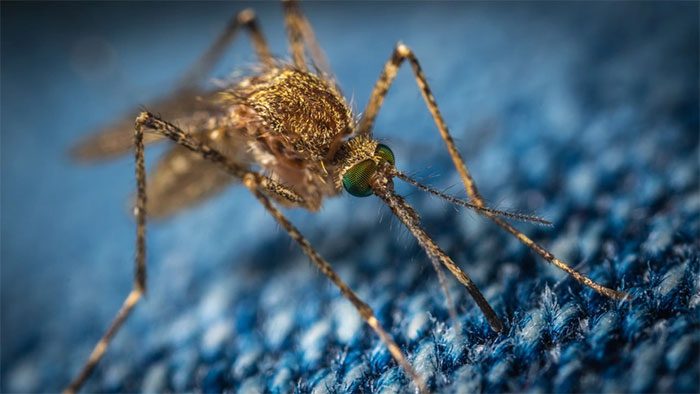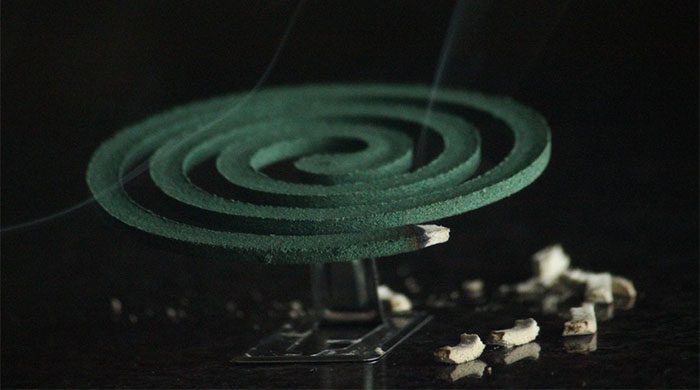The La Crosse virus is rapidly spreading and becoming more common in the United States recently.
In the Laudick family in Greensburg, Indiana, life changed forever on August 5, 2013, when 4-year-old Leah Laudick told her mother, Shelly, that she suddenly felt severe headaches.
Two days later, Leah was hospitalized locally with worsening headaches and a slight increase in white blood cell count. She slept almost the entire day and began to show no response to external stimuli by August 9, 2013.
On the same day, the young patient was quickly transferred to Peyton Manning Children’s Hospital in Indianapolis. It was here that Leah experienced her first seizure.
At this point, doctors could not determine Leah’s condition. Tests for meningitis, rashes, and herpes all returned negative results.
One day later (August 10, 2013), Leah’s brain activity ceased. That night, she passed away, leaving her family in mourning.
It wasn’t until several months later that the Laudick family received information from the U.S. Centers for Disease Control and Prevention (CDC) about a disease called La Crosse. This illness occurs after a patient is bitten by a mosquito. This was also the cause of Leah’s death.
What is La Crosse Disease?
La Crosse disease is the second most common mosquito-borne virus in the country.
According to the CDC, the West Nile virus accounts for over 90% of annual mosquito or tick-borne virus infections. La Crosse virus ranks second, with approximately 2% of virus infections from mosquitoes or ticks each year (equivalent to 50-150 cases annually). Both children and adults can be infected with the La Crosse virus.

The La Crosse virus transmitted through mosquito bites can affect the central nervous system. (Image source: ekamelev).
La Crosse was first identified in the United States in 1960. Historically, most cases of this virus have been reported in the Upper Midwest and Mid-Atlantic states. Leah was the only case reported in Indiana in 2013.
Currently, most cases occur in the southern Appalachian region, stretching from northern Alabama and Georgia through eastern Tennessee and northwestern North Carolina to Kentucky, Virginia, and West Virginia.
The reasons for the location of these cases remain unexplained. However, many hypotheses have been proposed regarding climate, land use, and invasive mosquito species.
Challenges in Diagnosing La Crosse
The La Crosse virus is primarily carried and transmitted by the treehole mosquito, Aedes triseriatus, a local species found throughout much of the eastern United States. This mosquito prefers habitats with tree holes for females to lay their eggs, such as hardwood forests.
However, the virus can also be transmitted through two invasive mosquito species: Aedes albopictus (Asian tiger mosquito) and Aedes japonicus (Japanese mosquito).
The Asian tiger and Japanese mosquitoes are spreading across the United States in response to climate changes. They are also being transported and spread from water containers.
A group of researchers has found them in the same habitats as the treehole mosquito, in areas with abundant hardwood trees such as parks, cemeteries, and residential backyards. They have also found these mosquitoes near reported La Crosse disease cases.
All three mosquito species thrive in the same water sources and feed on mammals, including humans.
Diagnosing La Crosse disease is quite difficult because its symptoms closely resemble those of the flu. The only way to confirm La Crosse disease is to send blood and cerebrospinal fluid samples to health authorities for testing.
One issue with this disease is that La Crosse-infected patients often cluster in densely populated communities for many years.
For example, among the 115 reported cases in Tennessee from 2011 to the present, most cases have occurred in a few small counties within the state. Therefore, when some cases are diagnosed, doctors and local leaders may be aware that the virus exists in their area.
Symptoms of La Crosse
Cases of La Crosse typically begin with symptoms of fever, fatigue, vomiting, and headaches. This condition can last for nearly two weeks. Most individuals infected with the virus can fully recover.
However, like West Nile virus, La Crosse is a neuroinvasive disease, meaning it can invade and affect the central nervous system.
Research shows that age, immune system status, and the virus strain are significant factors in the progression of La Crosse disease. On the other hand, delays in hospitalization and emergency care can also affect the severity of the disease.
The most vulnerable groups are immunocompromised individuals and children. Reports indicate that over 60 children are diagnosed with La Crosse disease each year. Severe cases are often identified in hospitals after patients experience seizures, coma, paralysis on one side, or altered mental states.
Severe La Crosse cases can lead to long-term neurological damage. Fatalities from this virus are very rare. However, neurological and behavioral effects can occur after recovery, including cognitive disorders, attention deficit hyperactivity disorder (ADHD), and reduced IQ.
Preventing La Crosse Disease
To date, scientists continue to recommend that the public take measures to prevent mosquito bites from the outset to avoid infection with La Crosse.

Mosquito repellent products, such as sprays or creams, can effectively prevent the disease. (Image source: ronald_langeveld).
Another measure is to limit the breeding of La Crosse virus-carrying mosquitoes in local areas. This requires residents to eliminate outdoor water-holding objects such as plant pots and bottles. These items can simulate forest conditions and facilitate mosquito breeding.
Mosquitoes carrying the La Crosse virus have also been found breeding in water-filled tires. Therefore, we can drill drainage holes in tires to mitigate this issue.
Another strategy to help prevent this disease is to avoid mosquito bites at all costs when indoors during peak mosquito hours, typically in the early evening.
Specifically, using products like mosquito repellent, wearing light-colored clothing, and applying insect repellent can help prevent mosquito bites.


















































